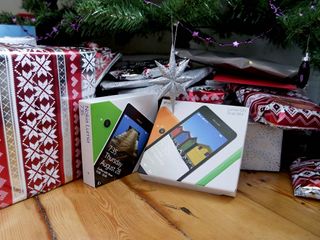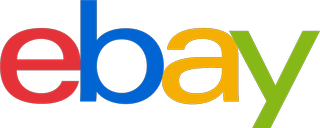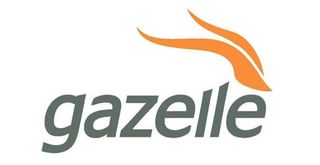Best Places to Buy a Used Phone
Buying a used phone doesn't have to be overly complicated or stressful.

The used phone market is an iceberg; you can only see the tip sticking out of the water, but it goes far deeper than you can imagine. This bears out in a recent Deloitte report that claims the used phone market grew to 120 million units in 2016, generating $17 billion for their owners. That number is only going to get bigger faster: IDC believes that by 2020, over 220 million used devices will be sold or traded annually.
That's a lot of gear, and similar to how a new car loses its value once it's driven off the lot, phones immediately become cheaper once they're removed from the plastic wrap. For a seller — even one who treats his or her phone with the utmost care — that can be problematic. For a buyer, though, that becomes an opportunity to pick up a gently-used device for a great deal.
Things to consider before you buy a used phone
Why you can trust Windows Central
We've written of the most important considerations you need to take into account when buying a new phone — do a visual inspection if possible; always purchase from a reputable seller; be patient; be aware of carrier locks or other roadblocks; look into insurance, especially if the phone is out of warranty — but there are a few other things to think about.
The first is what kind of used phone you're looking to buy:
- A used phone purchased directly from a seller (Craigslist).
- A used phone purchased through an intermediary that has verified its condition (Gazelle).
- A refurbished phone that has been through a "touch up" directly from the manufacturer or a partner (Samsung).
Know what kind of used phone buying experience you want before you start shopping around.
You can probably get the best deal buying directly from someone else because there is no intermediary taking a fee, but you also run the risk of the phone having issues that the naked eye can't see. If you know exactly what you want and know what to look for, you're probably going to be comfortable buying a used phone from a direct marketplace like Craiglist, Swappa or one of many buy or sell forums.
If you don't want to take any chances with the quality, but still don't mind a bit of wear and tear, buying through an intermediary marketplace like Gazelle could work really well. The phones often come with (admittedly limited) warranties and money-back guarantees which, as a buyer, offer considerably more peace of mind than the average "meet up at the nearby 7-Eleven and hand over a wad of cash" type deal.
Finally, buying a certified refurbished phone is your safest bet, but it comes with the least discount over a new product. Both Samsung and Apple sell refurbished phones directly on their websites, and though the savings are not substantial, they're at least guaranteed to work. For example, Samsung sells an AT&T-locked 32GB Galaxy S6 for $399. The same phone can be had for between $239 and $309 at Gazelle, which inspects but doesn't refurbish the products, and between $130 and $225 at Swappa, which merely connects buyers and sellers. But Samsung sells its refurbished models with a 12-month warranty, a charger and cable, and brand new headphones. Gazelle throws in a charger but no headphones, and Swappa just ensures a clean exchange (for a small fee).

The best places to buy a used phone
There are innumerable places to buy a used phone on the internet, and depending on your country, this list may not be as applicable (though we tried to highlight international marketplaces as much as possible).
Craigslist

Craigslist tends to set up those "meet up at the nearby 7-Eleven and hand over a wad of cash" type phone deals, which can be hit-or-miss depending on how adept you are at identifying scams — of which there are many.
The main things Craigslist has going for it are size and scale — it's practically everywhere, and has communities for almost every city in the world. You will be able to find a used phone on Craigslist. That's not the problem; the problem is sifting through the thousands of listings to find something worth pursuing and ensuring that the phone you decide on does not have underlying damage or, worse, that its IMEI (a unique number that helps identify individual devices) hasn't been blocked due to theft.
- Good — Good prices, excellent availability, and plenty of choices, with the option of buying local to check condition
- Bad — Hard to verify sellers or the quality of the phones
eBay

eBay is enormous, and today continues to be one of the top places to purchase a used phone. It has the advantages of Craigslist, scale, with few of the disadvantages, especially since it uses PayPal to ensure that payments can be recalled should there be a problem.
For buyers, eBay has a robust filtering system, allowing you to search for exactly what you want, with filters for price and carrier — even color. Of course, eBay still has its roots as an auction house, and that is how some used phones are still sold, but far more of them are sold at set prices. eBay charges sellers, not buyers, to host their listings, so all you need to do is find the right listing and you're off to the races.
eBay's best feature is its Money Back Guarantee which, combined with the extensive seller profiles, makes it easy to buy with confidence. If there's an issue with the device, or the shipment, you can apply to get your money back and, within reason, eBay will either cancel the PayPal transaction or, if it's already gone through, refund you. Seller profiles let you filter potential purchases based on trusted sellers that have been around the block once, 10, or 10,000 times.
- Good — Lots of selection with verifiable sellers with a money back guarantee.
- Bad — Potentially high cost of shipping, and you won't be able to see the device before buying
Swappa

Swappa began its life as a small Android-based phone buying and selling community, but it's since expanded to include all mobile devices, such as tablets, Chromebooks and MacBooks.
Swappa works on a set fee structure that's very different than most other platforms, and this is important: the buyer pays the fee. Most will pay under $20 for the privilege, and all payments are done over PayPal, which is incredibly convenient and secure. Why is a buyer fee better for both buyers and sellers? Because it encourages sellers to list their products on Swappa, adding inventory to a service that relies heavily on participation.
Swappa does not physically inspect devices, but it does do a few things to make sure the buyer is getting what he or she pays for. All listings are verified by a human, who ensures that the IMEI is valid and can be activated. All listings must have good quality photos that clearly show any damage, and the quality (fair, good or excellent) should match the photos. The cost of shipping is included in the price of the listing, which should prevent post-sale price gouging. And because Swappa uses PayPal, all listings are protected, so if a device doesn't arrive as advertised, buyers have recourse to get their money back.
Finally, Swappa's prices tend to be lower than many curated services since, aside from the flat fee, the seller sets the price.
- Good — Plenty of listings with clear quality guidelines and good prices
- Bad — Buyer pays fee, no warranty or accessories
Gazelle

Gazelle buys phones from sellers and resells some of them on its website just like a regular e-commerce store (the rest are either recycled or sold to third parties). The advantage is that once Gazelle receives the device, it performs a so-called "30-point inspection process" to ensure that it is in working order and puts a SIM card in it to make sure it can properly connect to a network.
As a buyer, that means you may pay slightly more than Swappa for the equivalent model, but you get a phone that is guaranteed to work, either unlocked on a number of carriers or the one that it is advertised to be locked to, and there is a 30-day return policy if you're not completely satisfied.
Gazelle also offers financing options, which allows it to compete with carriers by offering flexible payment plans that don't require a lot of money up front. At the same time, Gazelle doesn't accept every type of Android phone because its inspection system is only optimized for a handful of models — all popular Galaxys are accepted, but it only recently started buying (and selling) the Google Pixel — which ensures a higher-quality buying experience.
- Good — Seamless buying experience with plenty of choice, all phones come with a charger and are guaranteed to work, 30-day money back return policy
- Bad — Doesn't sell every type of phone, could be more expensive than other options
Glyde

Glyde has an interesting business model, somewhere between Swappa and Gazelle. Like Swappa, it's a user-to-user e-commerce portal. But, like Gazelle, it asserts some control over the potential exchange by forcing the seller to use its secure shipping container, and it doesn't release payment to the seller until the buyer receives it. It also promises to refund a disappointed buyer within 72-hours.
All phones, from iPhones to Galaxys to Windows phones, are available to purchase on Glyde, and buyers pay no additional fee beyond what is shown on the site.
- Good — Lots of choice and buyers have leverage if unhappy with a sale
- Bad — Phones are not inspected beforehand so what you see may not be what you get
Your choices
What are your favorite places to buy used phones? Let us know in the comments.
Get the Windows Central Newsletter
All the latest news, reviews, and guides for Windows and Xbox diehards.

